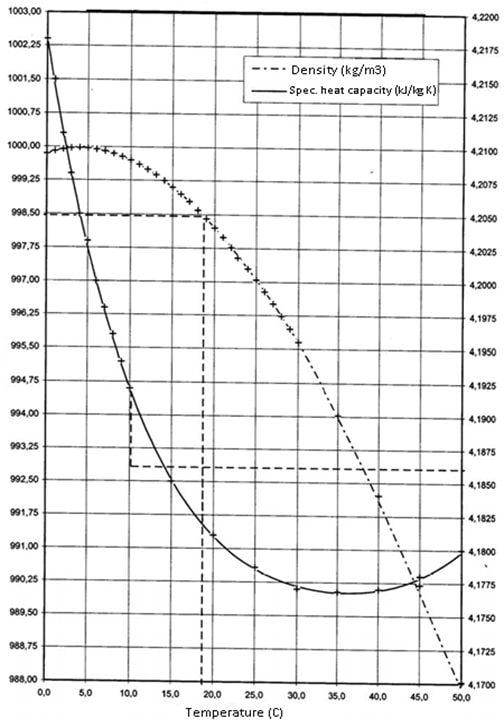
Hello everybody, my name is Mile and I want to share my experience in a power plant based in Macedonia.
The tests for determining the losses of power in synchronous generators are of great significance, because of the fact that those parameters are necessary for the efficiency of the generator.
The power losses in the generator consist of the following components:
- losses in ventilation,
- losses in bearings,
- losses in magnetic circuit,
- losses of power in the excitation system,
- losses of power in stator coil.
| Parameter | Value |
| Nominal voltage (V) | 10500 |
| Nominal current (A) | 1127,2 |
| Voltage of excitation coil (V) | 65 |
| Current of excitation coil (А) | 1078 |
| Power (kVA) | 20500 |
| Power factor | 0,9 |
| Connection | Y |
| Frequency (Hz) | 50 |
| Speed (rpm) | 214,3 |
| Type | IM 8425 (W41) |
| Insulation of stator coil | VACUBAND |
| Тemperature class (stator/rotor) | F/F |
| Temp. increase (stator/rotor) | 85/90 |
| Cooling | Вода-воздух |
| Тemp. of cooling air (C) | max 40 |
| Тemp. of cooling water (C) | max 20 |
| Air gap (mm) | 12 |
| Number of poles | 28 |
| Excitation system | static |
Table 1. Basic generator data
For the purpose of heat control of parts of the generator, a large number of Pt100 thermocouples are installed. In the magnetic circuit, we have 12 of them installed, for the cold air temperature we have 2, while 16 are for the bearings, and 2 thermocouples are for the hot air temperature.
Hydro generator: measuring the power losses
Losses that appear due to rotation include the friction losses and ventilation losses, which are constant during constant speed of the generator. Losses are measured according the EN60034-2 standard, for the period of 17 hours and synchronous speed of the generator of 214,3 rpm.
Ventilation losses (Pv) are determined through the ratio of the cooling water losses (Pv water) and the generator surface losses of power (Pv surface) given in table 2.
| Parameter | Value |
| -Flow (m3/s) | 0,0011567 |
| -Entry water temperature, t1 (oС) | 9,73 |
| -Output water temperature, t2 (oС) | 17,54 |
| – Cooling water losses (kW) | 37,77 |
Table 2. Ventilation losses

Losses in bearings consist of the losses in the lower leading bearing and the upper combined bearing. The measurements were conducted for a period of 24 h and in total we received 25,53 kW losses.
Losses in magnetic circuit are calculated based on the measured losses of power caused by the cooling water which are 90,83 kW, as well as the losses of power on the surface of the generator, losses in excitation system and the mechanical power losses.
| Evaluation | |
| Power losses from cooling water (kW) | 90,83 |
| Power losses on generators surface (kW) | -0,38 |
| Power losses in excitation system (kW) | -15,34 |
| Mechanical power losses (kW) | -35,69 |
| Power losses in magnetic circuit (kW) | 39,42 |
Table 3. Losses in magnetic circuit
Losses during nominal load when the generator works with nominal current of 1127,2 A are 108,49 kW.
Power losses in excitation system actually consist of the losses in excitation transformer, losses in cables, and losses in excitation system racks. In our case, we used two scenarios regarding the power factor, cosj=1 and cosj=0,9 (nominal power factor), and loads: 50, 60, 70, 80, 90 and 100 (%) from the nominal power, presented in table 4 and table 5.
| cos=1 | ||||||
| Load (%) | 100 | 90 | 80 | 70 | 60 | 50 |
| Load (kVA) | 20500 | 18450 | 16400 | 14350 | 12300 | 10250 |
| If (A) | 955,2 | 897,0 | 841,8 | 790,0 | 742,3 | 699,4 |
| PDC (kW) | 44,27 | 39,04 | 34,38 | 30,28 | 26,73 | 23,73 |
| Pexc losses (kW) | 5,59 | 5,18 | 4,80 | 4,46 | 4,16 | 3,89 |
Table 4. Power losses in excitation system for cos=1
| cos =0,9 | ||||||
| Load (%) | 100 | 90 | 80 | 70 | 60 | 50 |
| Load (kVA) | 20500 | 18450 | 16400 | 14350 | 12300 | 10250 |
| If (A) | 1189,5 | 1113,0 | 1039,8 | 969,7 | 902,8 | 839,3 |
| PDC (kW) | 68,65 | 60,10 | 52,45 | 45,62 | 39.54 | 34,18 |
| Pexc losses (kW) | 7,43 | 6,80 | 6,23 | 5,70 | 5,22 | 4,78 |
Table 5. Power losses in excitation system for cos =0,9
Hydro generator Efficiency
The generator efficiency is determined for two power factors (1 and 0,9) for 50, 60, 70, 80, 90 and 100 (%) of the nominal power. According the technical documentation for the generator, given by the manufacturer, the efficiency for cos =1 is 98,71and 98,43 (%) for cosj=0,9.
| Load (%) | 100 | 90 | 80 | 70 | 60 | 50 |
| Apparent power (kVA) | 20500 | 18450 | 16400 | 14350 | 12300 | 10250 |
| Stator current (A) | 1127,2 | 1014,5 | 901,8 | 789 | 673,3 | 563,6 |
| Ventilation and magnetic circuit losses (kW) | 74,99 | 74,99 | 74,99 | 74,99 | 74,99 | 74,99 |
| Bearings losses (generator part) (kW) | 25,53 | 25,53 | 25,53 | 25,53 | 25,53 | 25,53 |
| Losses during lad (kW) | 108,49 | 87,88 | 69,43 | 53,16 | 39,06 | 27,12 |
| Excitation current (А) | 955,2 | 897 | 841,8 | 790 | 742,3 | 699,4 |
| Excitation coils losses at 95 оС (kW) | 47,10 | 41,60 | 36,60 | 32,20 | 28,50 | 25,30 |
| Excitation system losses (kW) | 5,59 | 5,18 | 4,80 | 4,46 | 4,16 | 3,89 |
| Total losses in excitation losses (kW) | 52,69 | 46,78 | 41,40 | 36,66 | 32,66 | 29,19 |
| Total power losses in generator (kW) | 261,70 | 235,18 | 211,35 | 190,34 | 172,24 | 156,83 |
| Output power (kW) | 20500 | 18450 | 16400 | 14350 | 12300 | 10250 |
| Used power (kW) | 20761,70 | 18685,18 | 16611,35 | 14540,34 | 12472,24 | 10406,83 |
| Efficiency h (%) | 98,74 | 98,74 | 98,73 | 98,69 | 98,62 | 98,49 |
| Measured efficiency (%) | 98,71 | |||||
| Guaranteed efficiency (%) | 98,58 |
Table 6. Generator efficiency at power factor 1
| Load (%) | 100 | 90 | 80 | 70 | 60 | 50 |
| Apparent power (kVA) | 20500 | 18450 | 16400 | 14350 | 12300 | 10250 |
| Stator current (A) | 1127,2 | 1014,5 | 901,8 | 789 | 673,3 | 563,6 |
| Ventilation and magnetic circuit losses (kW) | 74,99 | 74,99 | 74,99 | 74,99 | 74,99 | 74,99 |
| Bearings losses (generator part) (kW) | 25,53 | 25,53 | 25,53 | 25,53 | 25,53 | 25,53 |
| Losses during lad (kW) | 108,49 | 87,88 | 69,43 | 53,16 | 39,06 | 27,12 |
| Excitation current (А) | 1189,5 | 1113,0 | 1039,8 | 969,7 | 902,8 | 839,3 |
| Excitation coils losses at 95 оС (kW) | 73,1 | 64,0 | 55,8 | 48,6 | 42,1 | 36,4 |
| Excitation system losses (kW) | 7,43 | 6,80 | 6,23 | 5,70 | 5,22 | 4,78 |
| Total losses in excitation losses (kW) | 80,53 | 70,80 | 62,03 | 54,3 | 47,3 | 41,2 |
| Total power losses in generator (kW) | 289,54 | 259,20 | 231,98 | 208,0 | 186,9 | 168,8 |
| Output power (kW) | 18450 | 16605 | 14760 | 12915 | 11070 | 9225 |
| Used power (kW) | 18739,5 | 16864,2 | 14992,0 | 13123,0 | 11256,9 | 9393,8 |
| Efficiency h (%) | 98,45 | 98,46 | 98,45 | 98,42 | 98,34 | 98,20 |
| Measured efficiency (%) | 98,43 | |||||
| Guaranteed efficiency (%) | 98,33 |
Table 7. Generator efficiency at power factor 0.9
The main parameter from which we determine which type of generator we are going to use is the efficiency. According the parameters in this article, and the efficiency parameters given in the tables, we can conclude that the generator has higher values for the efficiency than the ones specified by the manufacturer.
In our case, for power factor at value 1, we get measured efficiency of 98.71%, and guaranteed 98.58%, while for power factor at value 0.9, we get measured value of 98.43% and guaranteed value of 98.33% for the efficiency
Thanks for reading my essay, I hope it was interesting!
Mile
Share your thoughts on hydro generators and how to maintain their efficiency. Do you have tips or questions?